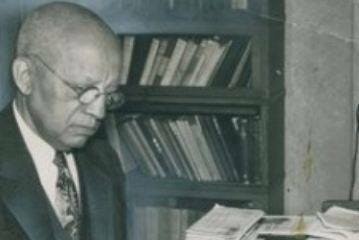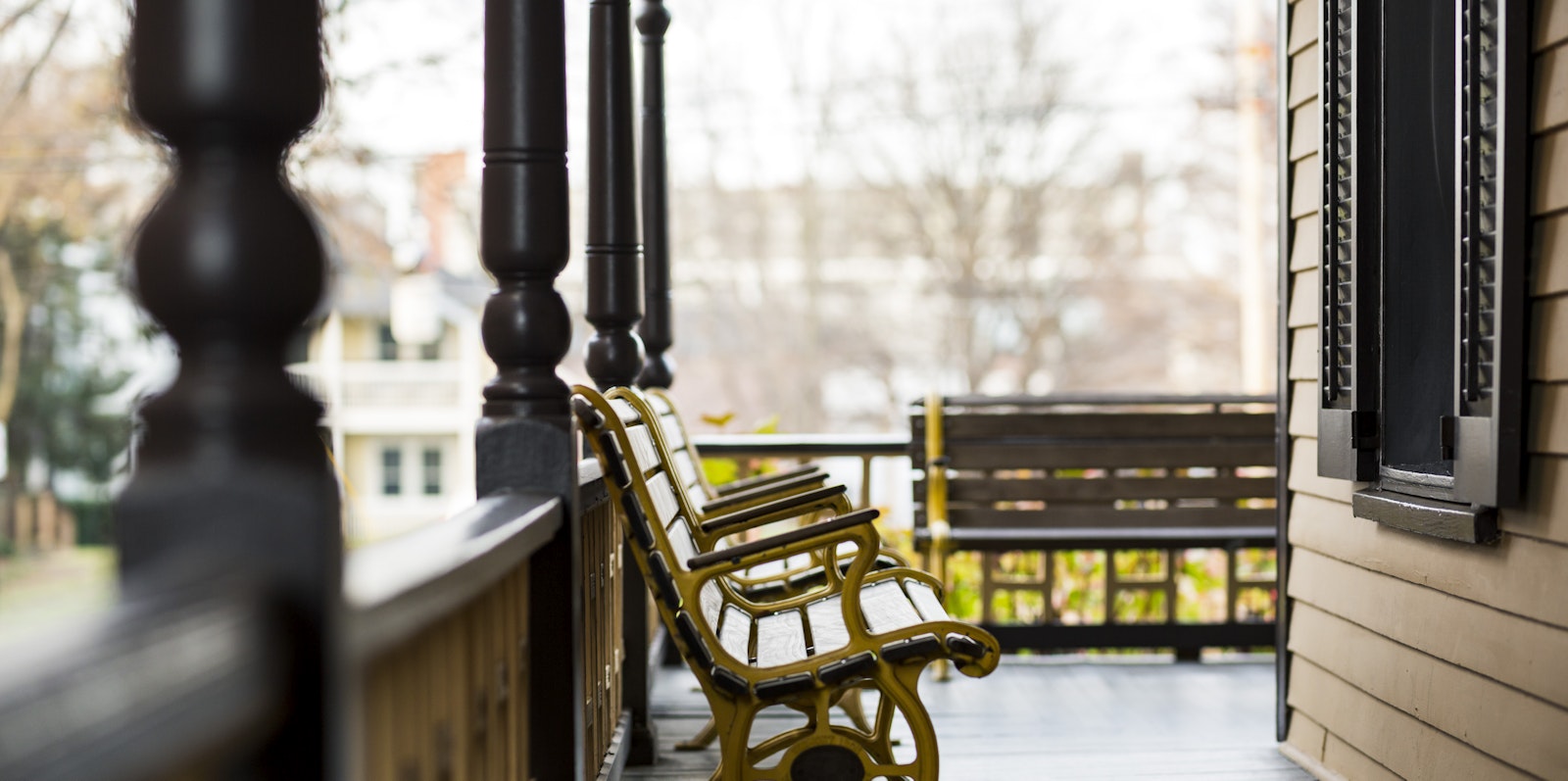
Telling Woodson's Story
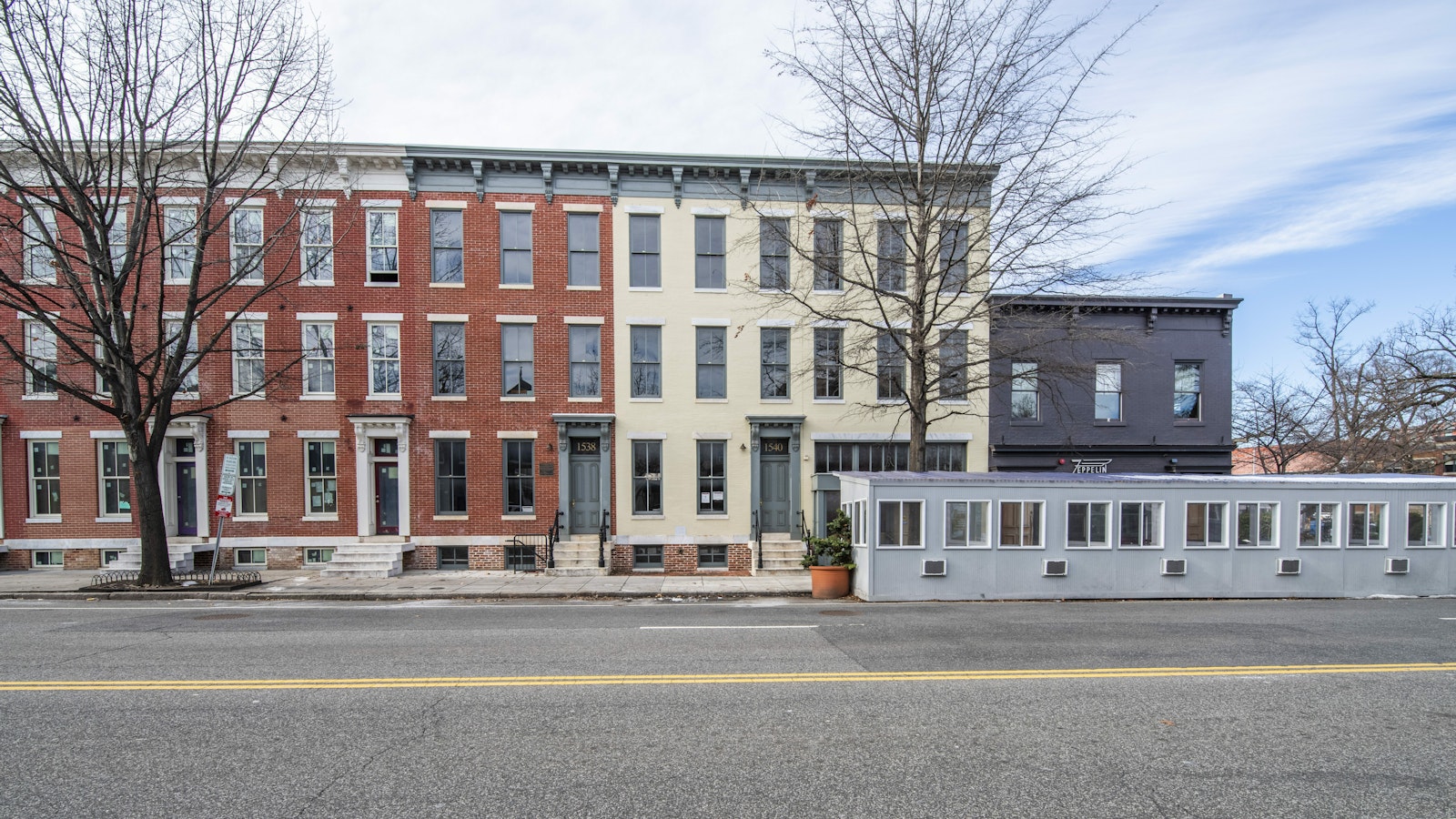
.
.
It has a National Park Service (NPS) sign out front, though it’s unassuming as far as national park sites go. But the modest home tells an outsized story.
At first glance, the house looks much like the other brick or concrete-façade rowhouses on its block in Washington, D.C. It’s been undergoing renovations for a few years. It was here, in his “office home,” that Dr. Carter G. Woodson studied, wrote, and dedicated his career to sharing and institutionalizing Black history.
It’s where Woodson in 1926 launched Negro History Week, now known as Black History Month, cementing his legacy as the “Father of Black History.”
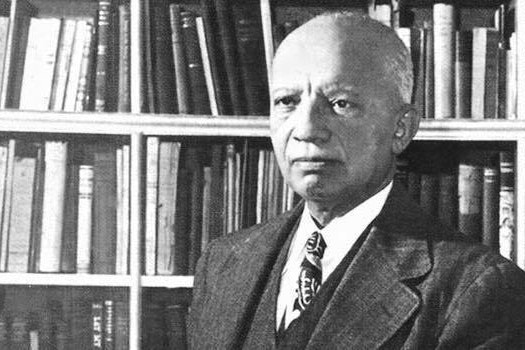
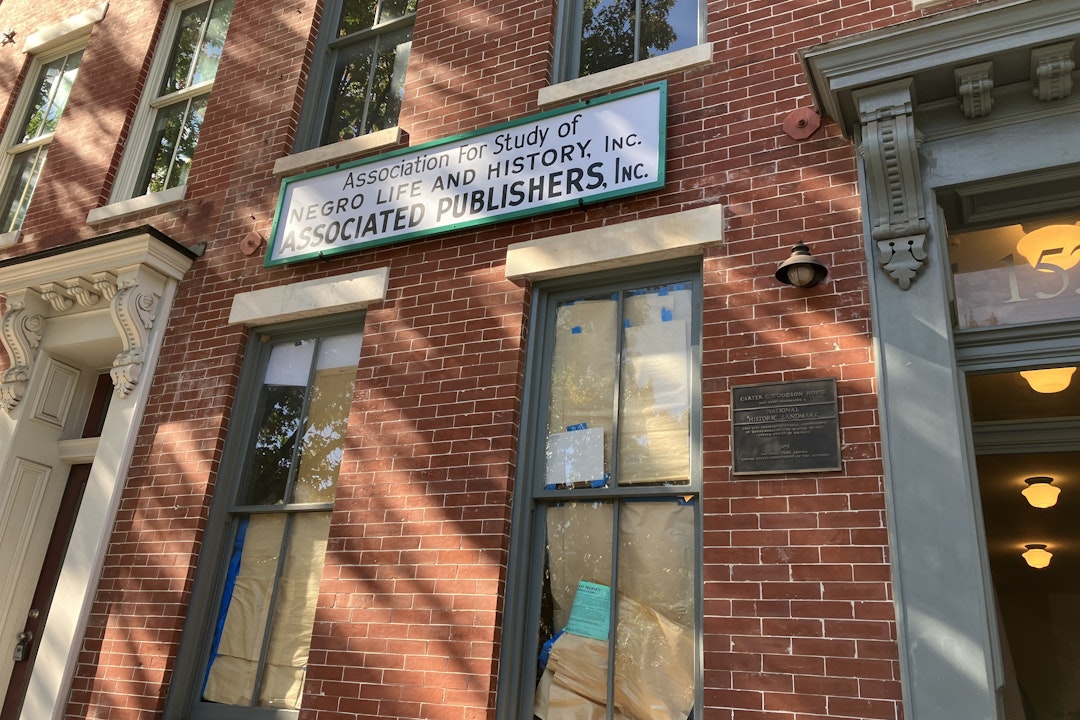
Woodson lived in the Shaw neighborhood house that he purchased for $8,000 from 1922 until his death in 1950. It was much more than a home, serving also as the center for Woodson’s scholarship and a nucleus for the early Black history movement.
The three-story brick Victorian 1870s building housed the first major organization, journal, and publishing company dedicated to institutionalizing Black history: the Association for the Study of Negro Life and History (later known as the Association for the Study of African American Life and History, or ASALH), which Woodson founded in 1915; the Journal of Negro History (now the Journal of African American History); and Associated Publishers, Inc.
Woodson worked, wrote, and held meetings from the office home, coordinating the activities of ASALH to inform the public about the contributions of Black people to the country’s creation, culture, and history, and of Associated Publishers, Inc. to print writing by African Americans. Almost every prominent African American scholar or activist during that time visited the office home.
Woodson’s most widely known contribution lives on each February through widespread celebration of Black History Month across schools, cities, and cultural institutions. While Woodson’s legacy has grown, his office home, at over 100 years old, was in need of restoration. In 2003, Congress designated the home as a National Historic Site. In 2006, the Carter G. Woodson Home National Historic Site became the 389th unit of the National Park System.
Beginning Renovations
With a mission to interpret the past, the park now has its eyes on the future, engaged in a years-long effort to make the site structurally and educationally robust to preserve the landmark and share Woodson’s story with visitors for generations to come.
The National Park Foundation (NPF), with generous support from the Fund II Foundation, is supporting NPS and ASALH on a large-scale effort to rehabilitate the historic home, connect it with two neighboring rowhomes for visitor contact and interpretation facilities, acquire and conserve important artifacts, and design and install new exhibits to tell Woodson’s life, contributions, and legacy.
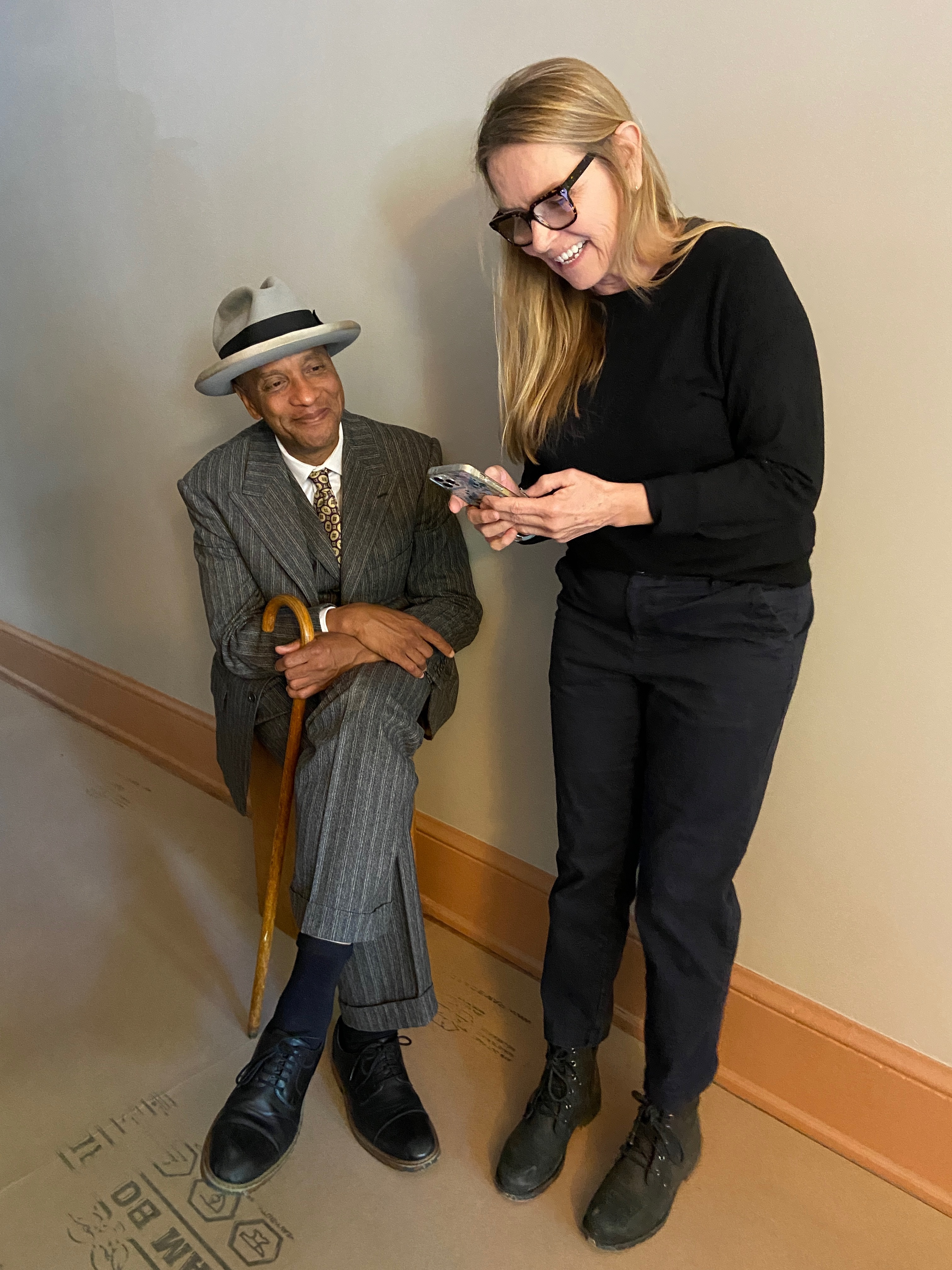
Michelle Jarvis has spent the past four years steeped in that work. As the project manager contracted by NPF to facilitate between NPS, partners, subject matter experts, and contractors on the home rehabilitation and exhibit design, she knows everything from how the new elevator will be installed to where visitors will learn each detail of Woodson’s story. From hammer and nail to film and signage plans, Jarvis has had a hand in every aspect of the multifaceted project.
Four years in, she’s still learning nuances of Woodson’s life and contributions.
“I knew of Woodson and his story, but I understand it with so much more depth and appreciation now,” Jarvis says. “I am inspired by him: his perseverance and integrity, and his commitment to his vision to document and share Black history.”
Woodson's Story
The park is dedicated to telling the story and spotlighting the man who documented the stories of other Black Americans and Black history writ large.
Woodson was born in 1875 in New Canton, VA, the son of formerly enslaved parents. He had few educational or job opportunities growing up, but by the time he turned 20, he had saved enough money from working as a coal miner to begin his formal education. Woodson became the second African American to earn a doctorate from Harvard during a time of widespread segregation under Jim Crow.
Throughout his education, Woodson noticed a lack of information about African American life and history in academic circles. Schools were not teaching African American history, and members of the general public knew little of their contributions. He made it his life’s work to change that and bring African American history to the fore through publishing a significant body of work and laying the groundwork for the intensive study of African American history.
The fact that universities across the country now offer studies in Black history, and as part of U.S. history departments, is in part a testament to Woodson’s efforts. As is today’s widespread adoption of Black History Month, which became a month in 1976 after Woodson initially started Negro History Week in 1926. He chose the second week of February to align with the birthdays of Abraham Lincoln on Feb. 12 and Frederick Douglass on Feb. 14.
Brick By Brick
But before welcoming visitors to learn about Woodson’s legacy and explore his office home, NPS needed to undertake a large-scale restoration of the site.
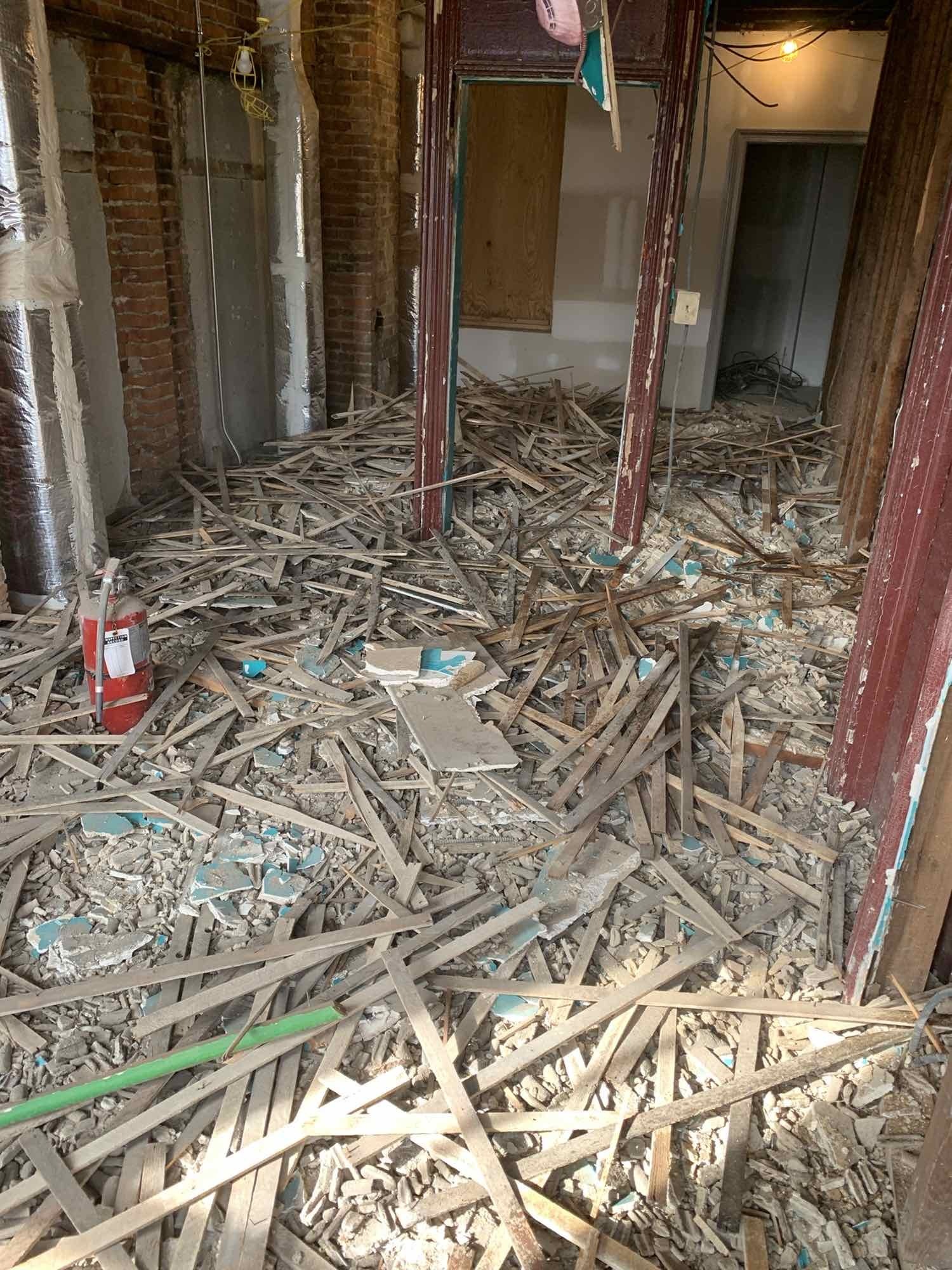
On the construction side, the main task has been rehabilitating the home at 1538 Ninth St. NW as well as two adjacent row houses. Significant work was needed to stabilize the structures and ensure they are safe for visitors and years of future use.
Renovating the historic buildings has been a complex process that’s involved everything from stabilizing and framing to installing new plumbing, electric, fire systems, and communication systems.
The façade of the home was removed brick by brick so that the structure could be stabilized. Each brick was then returned to its exact same location. All the interior items from doors to staircases have been rehabilitated. Everything from locks and fire alarms to stairs and exits has had to be carefully planned and done in coordination.
“Its challenge is rewarding,” says Jarvis, who has been involved in all those aspects and facilitated decision making and work between park leadership, architects, contractors, and other partners.
“There are so many disparate pieces of this project that have to be dovetailed together,” she says, referring to architecture design, building construction, and exhibit design and fabrication, among other elements. “It’s like Tetris. You’ve got to make sure they’re all fitting together.”
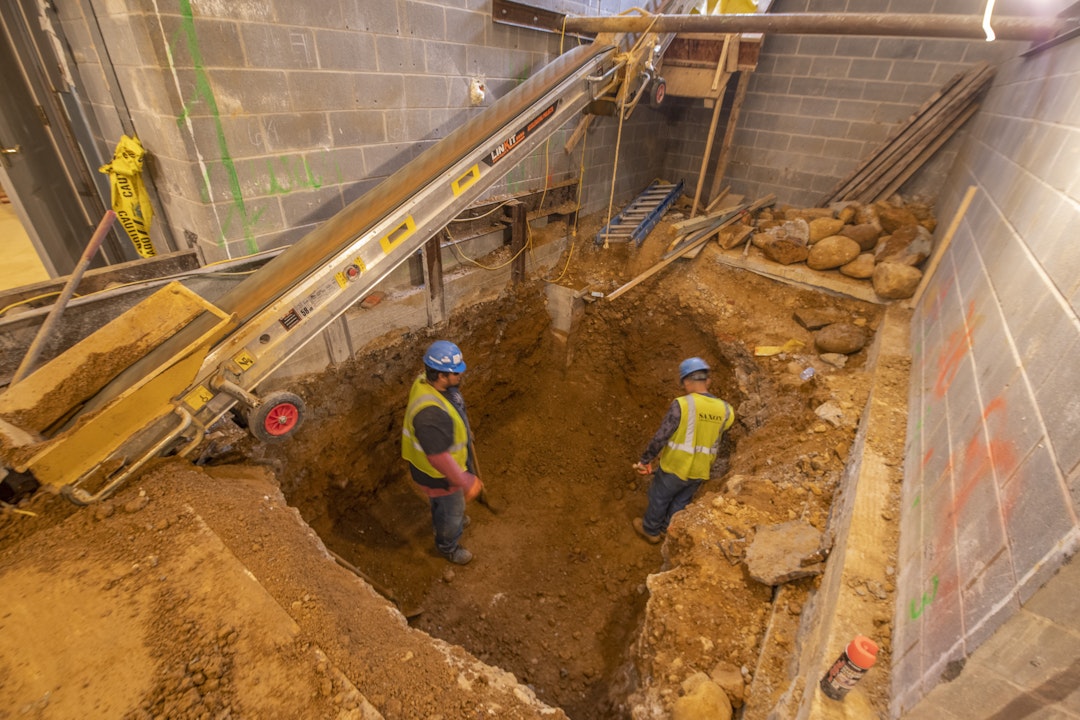
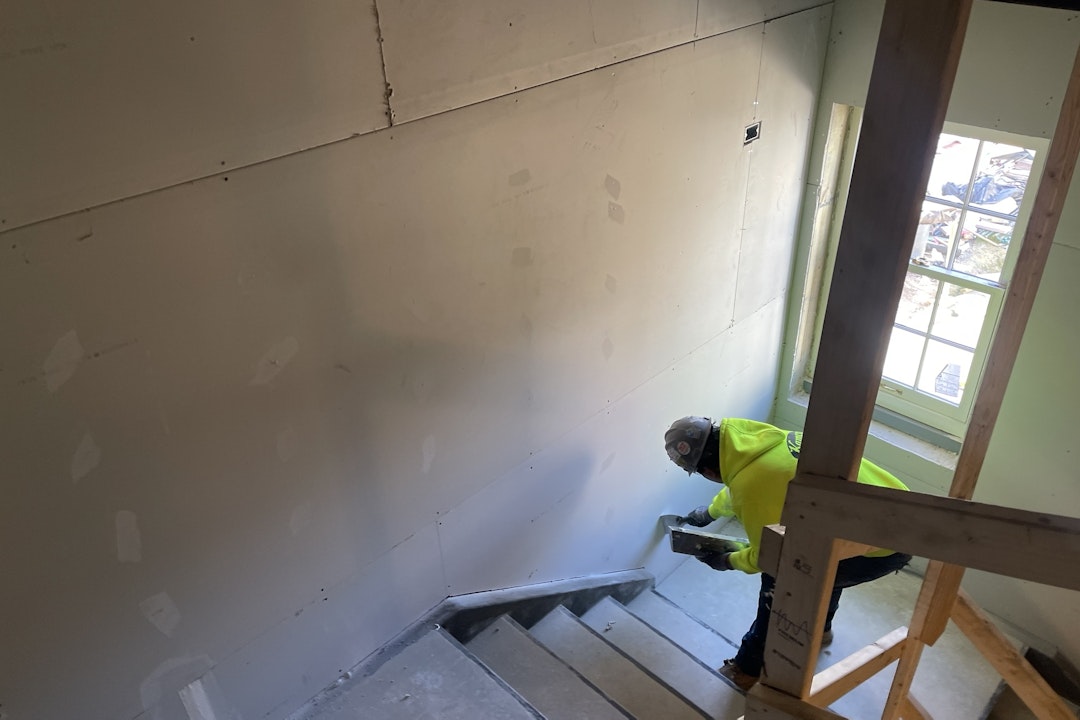
The site has a new elevator that will enable visitors who couldn’t previously see the upper floor of the home to do so. Where the elevator is now was a first floor restroom, Jarvis recalls. Then it was a massive pit. Now, it’s an elevator and stairs.
The three buildings are now interconnected, with ADA-compliant restrooms, a meeting room, a classroom, NPS offices, offices for ASALH, and more, in progress.
Historic Objects, Cutting-edge Design
The icing on the cake of the restored buildings will be the informative and interactive exhibits, graphics, artifacts, films, and touchscreens that will engage visitors and interpret Woodson’s home, life, career, contributions to the fields of African American Studies, Black History, and the civil rights movement, as well as his impact through today. Visitors both in person and virtually will be able to learn about Woodson and be inspired by his efforts.
From the start of the project, and throughout the construction and renovation process, Jarvis has coordinated with the park and partners on the planning and designing of exhibits, films, and artifacts. They’ve decided what aspects of Woodson’s life to explore, which other individuals to highlight alongside him, and what elements should go where throughout the home.
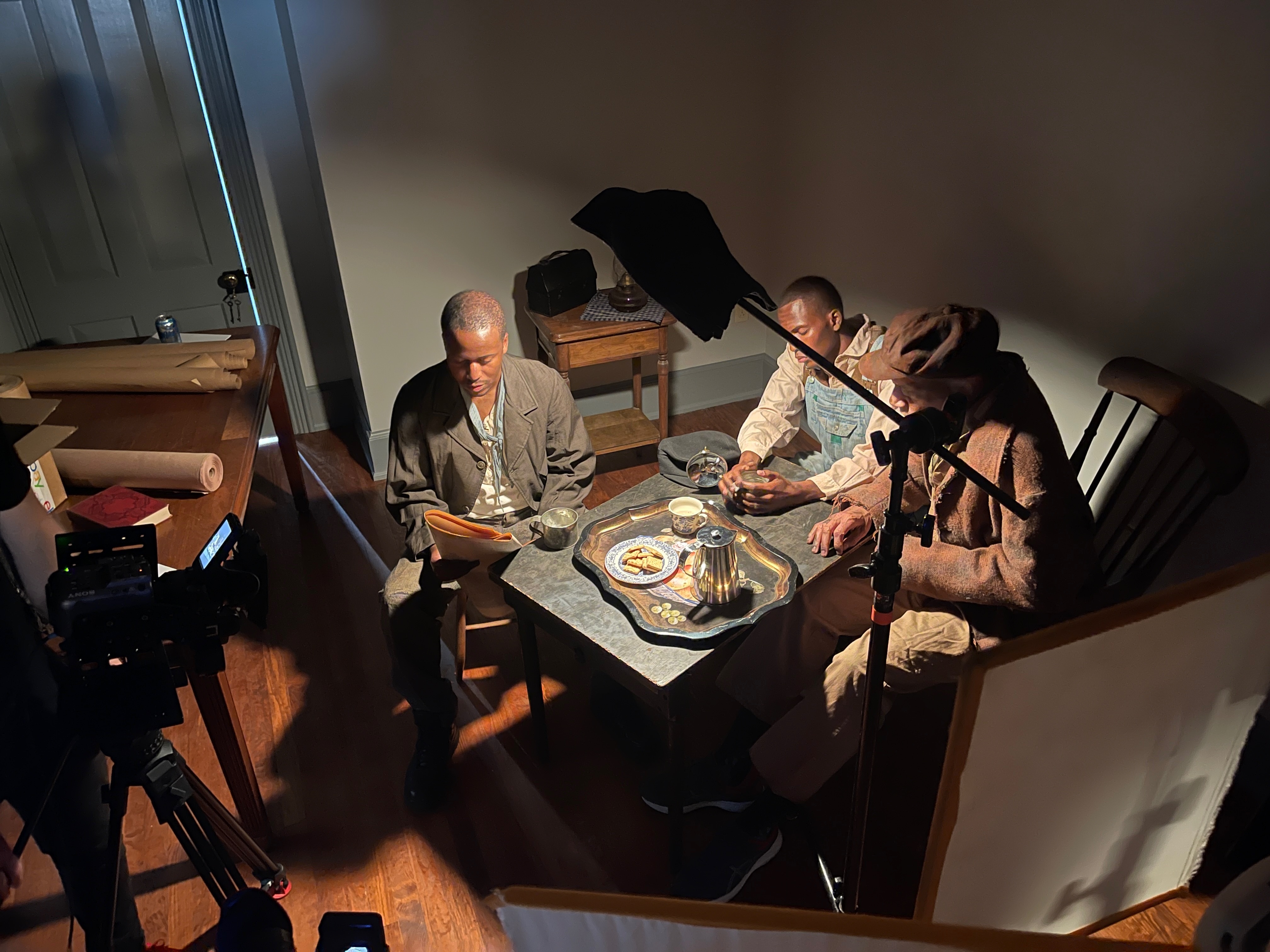
ASALH’s Woodson Home Committee, a group of Woodson experts, has been integral to exhibit planning, ensuring content will be comprehensive and accurate. ASALH also donated to NPS many of Woodson’s artifacts for conservation and display in the home.
A visit to the site will feature three main interpretive elements: an introductory gallery, a ranger-led guided tour of the historic home, and a final gallery exploring Woodson’s legacy.
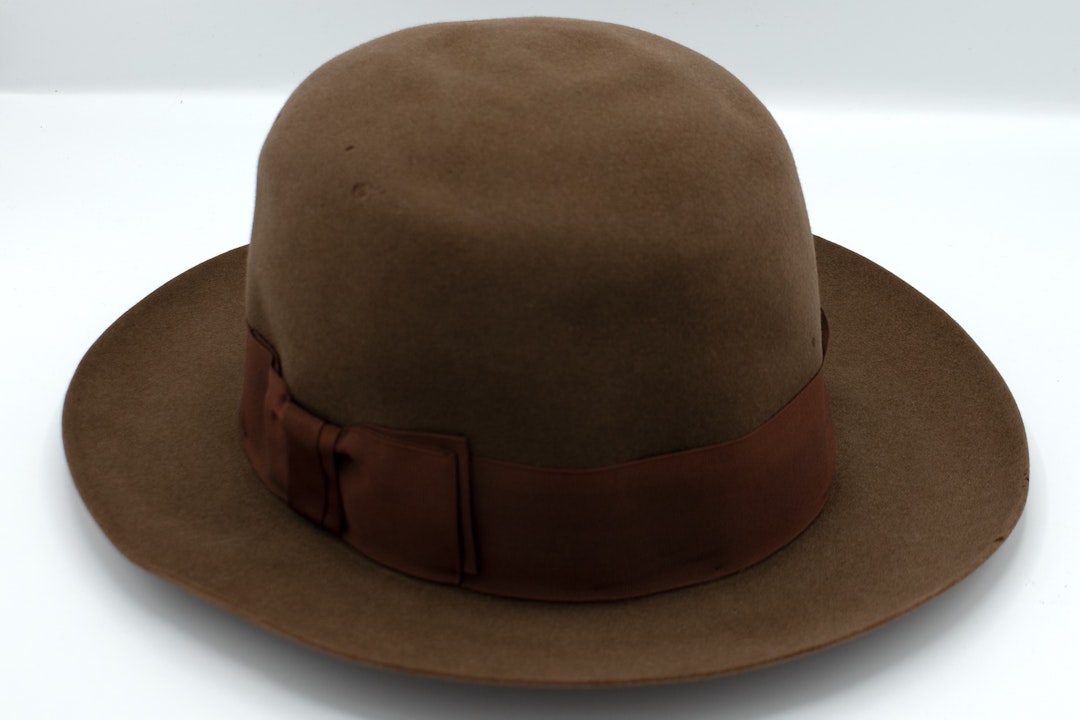
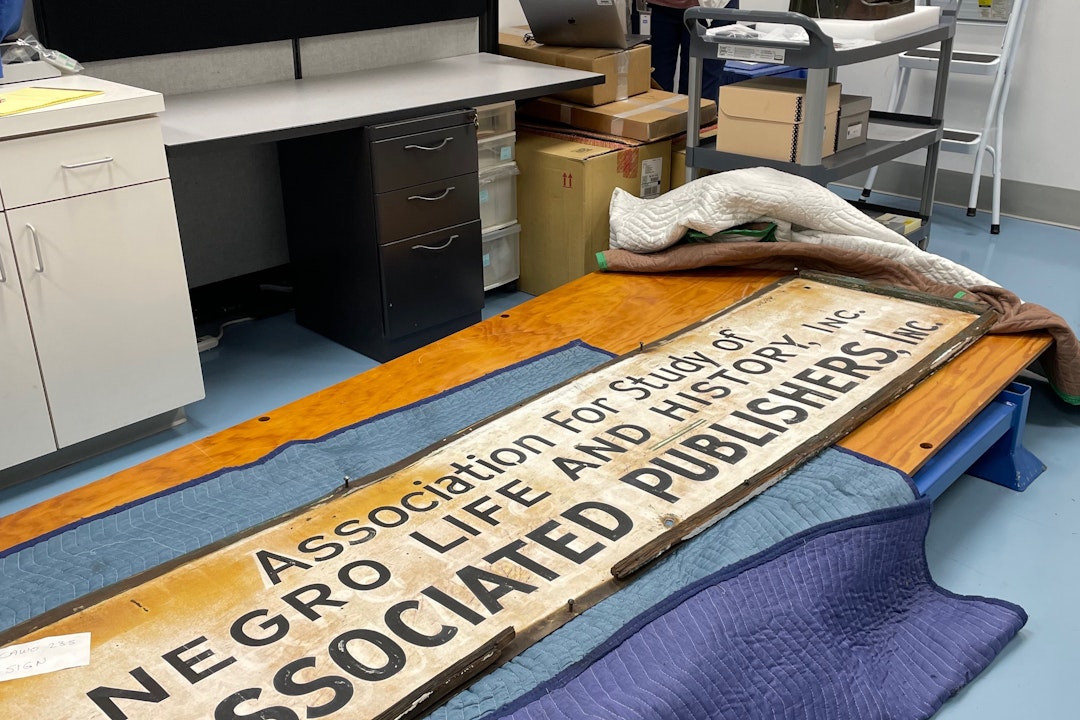
The first gallery will orient visitors to Woodson’s life. The lobby’s walls will be flanked with books – reproductions of books Woodson wrote, published, or read – that are interspersed with backlit graphics, giving visitors an immediate understanding of Woodson’s interests and commitment in learning and documenting history.

“That really sets up the experience,” says Jarvis, who recently visited the fabricator’s shop to see the books. As they were just an idea for so long, she was “floored” to see the physical books and visualize that concept coming to life. “It’s very powerful.”
She holds up one book as an example – it’s shallow, four to six inches, to fit in the wall, with the title down the spine and the material aged and styled to look just like a book from the early 1900s.
“Imagine seeing hundreds of these,” Jarvis says. “They just had them in the fabricator’s office on a table with all these books, and you just think, ‘Oh my gosh, here are all the books!’ It’s a culmination of a certain point in the progress.”
Everlasting Legacy
For Jarvis, a highlight of the project has not only been the content and the opportunity to share Woodson’s story – but the many people behind the project and their passion for the work.
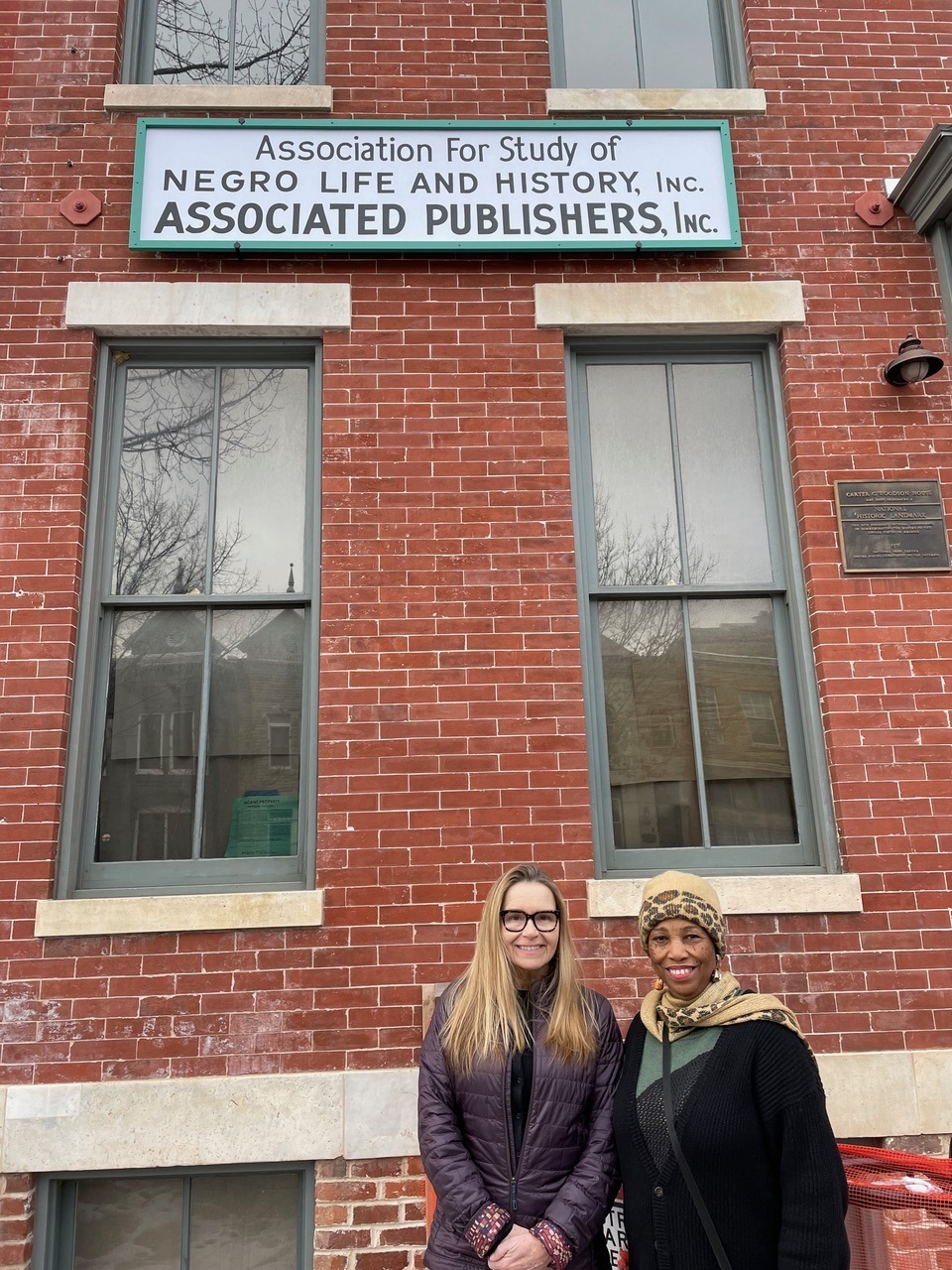
“Their commitment to telling this story is so important and it really has come through in their participation and involvement,” says Jarvis. “There’s so many contributors with so many different backgrounds, and they’ve all been very committed to telling Woodson’s story, to building this new site – without compromise.”
Jarvis hopes that people who visit the site once it opens learn about Woodson on a deep level. For those who know who he was, there’s plenty more to learn. For visitors who aren’t familiar with him, she hopes they’ll gain an awareness of the role he played in documenting American history. The final part of the home visit – the legacy gallery – will position Woodson in terms of the people who impacted him and his ongoing impact today.
“I hope visitors will be inspired to take whatever’s of importance of them and be able to incorporate that into their own life and build their own legacy, maybe having been inspired by Woodson.”
Our Work

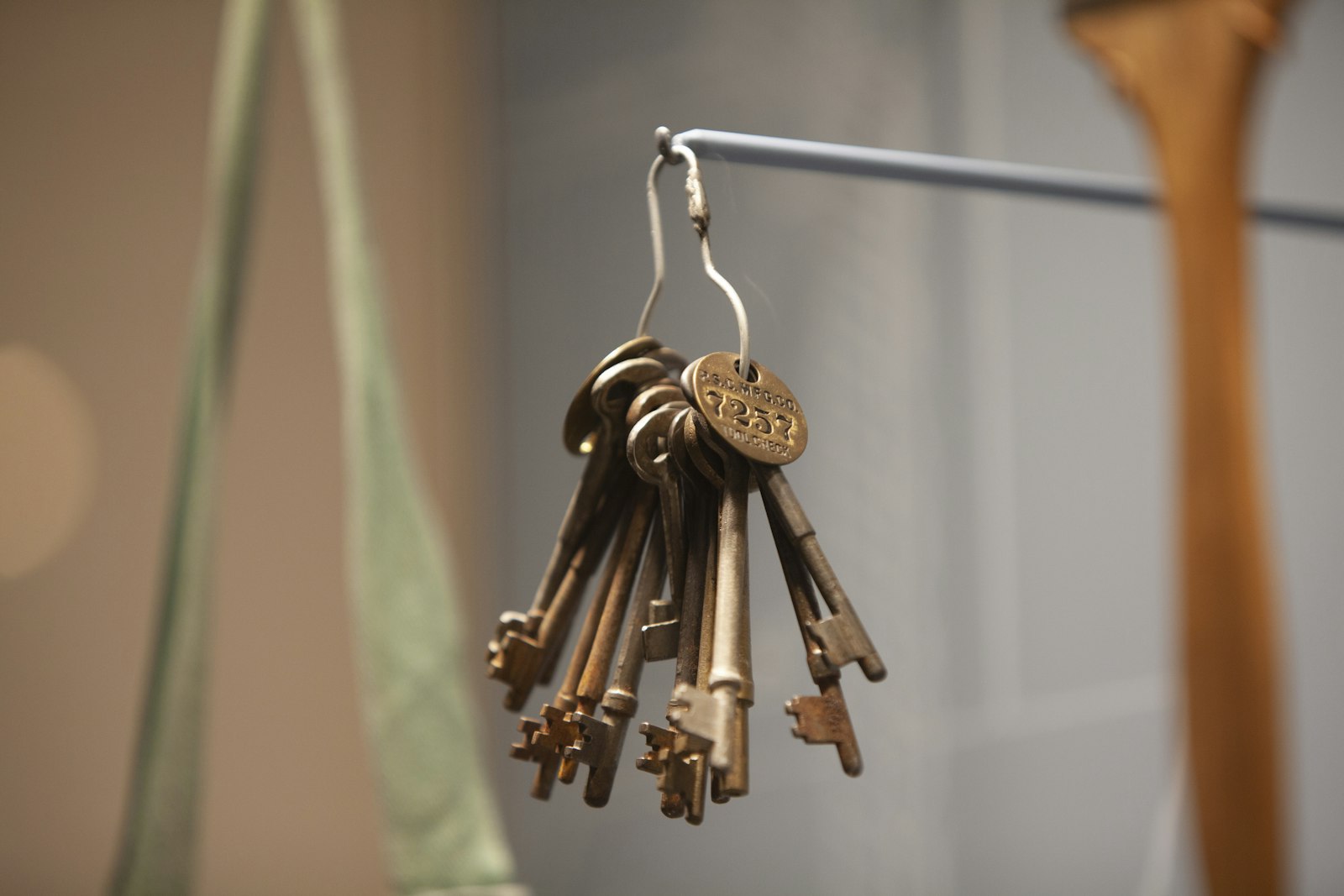
Be Part of the Past and Future of Our Parks
You can help improve access to places, cultural heritage, and stories that give Americans a stronger connection to our country. Support NPF’s work around preserving the history and culture that live within our national parks.
